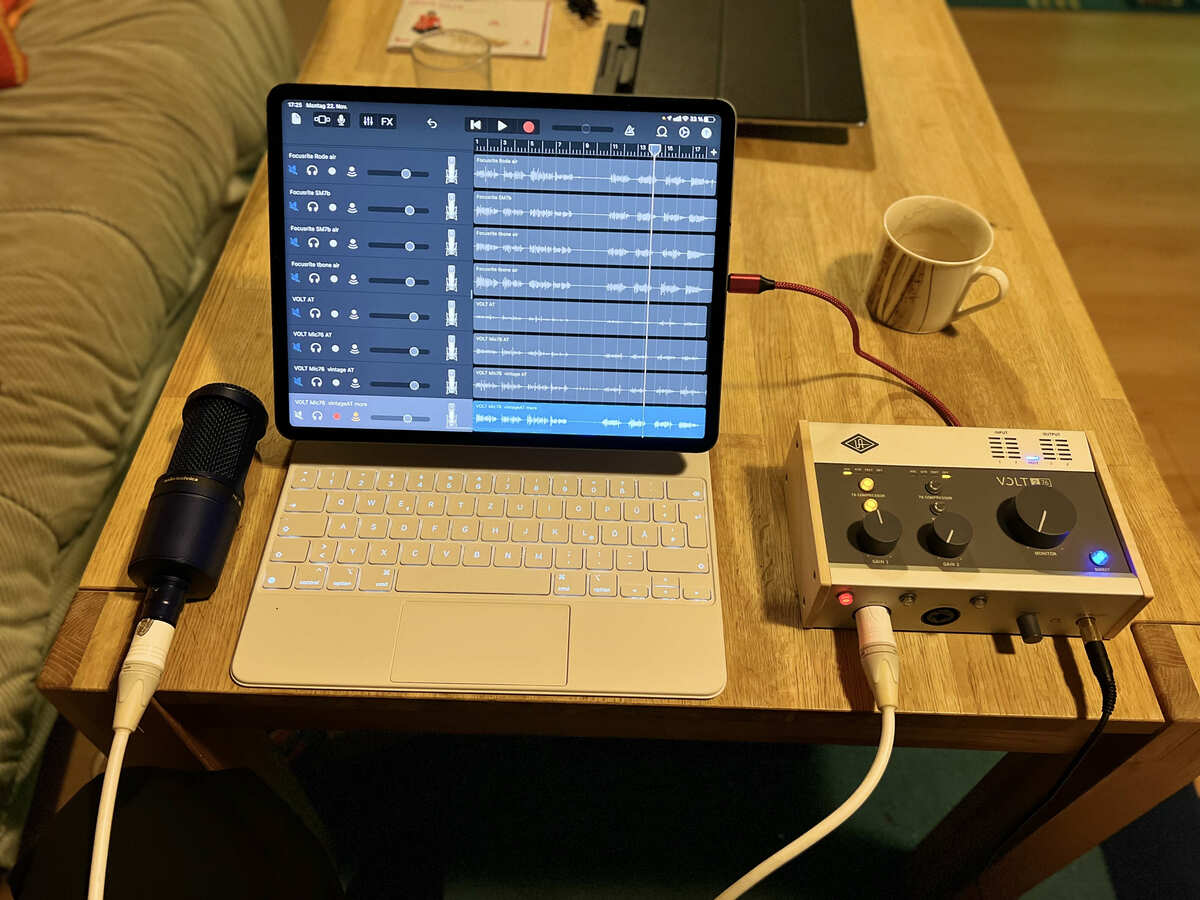Loopy Pro: Create music, your way.
What is Loopy Pro? — Loopy Pro is a powerful, flexible, and intuitive live looper, sampler, clip launcher and DAW for iPhone and iPad. At its core, it allows you to record and layer sounds in real-time to create complex musical arrangements. But it doesn’t stop there—Loopy Pro offers advanced tools to customize your workflow, build dynamic performance setups, and create a seamless connection between instruments, effects, and external gear.
Use it for live looping, sequencing, arranging, mixing, and much more. Whether you're a live performer, a producer, or just experimenting with sound, Loopy Pro helps you take control of your creative process.
Download on the App StoreLoopy Pro is your all-in-one musical toolkit. Try it for free today.
UAD Universal Audio Volt 276 interface - 1st impression
the Universal Audio Volt 276 arrived yesterday - first impression with a few vocal lines in comparison with the SSL 2+ - the mode with "vintage and 276 compressor" sounds as expected rounder, fatter, slightly more tube-like - nuances indeed, but still recognizable-there is a slight tendency, "coloring" in this direction - and with the iPad Pro M1 is sufficient, as with the SSL2+ , as the only connection the USB-C cable to use all functions (48 volts etc. . .)and does not need an extra power supply, which makes it very portable. 






Comments
Nice review...
Purely based on the 'specs' the SSL2 seems to provide more gain (62db vs. 55db) than the volt?
This could be an important factory for dynamic mic users...
Looking forward to Julian Krause putting the 276 to the test

(This is for the non '76 models).
yes I know, thx
the next days Íll give it try with SM7b, Rode etc and of course guitars etc..
The plain numeric figures (62 versus 55dB) are meaningless if the base reference of the measurement is unknown (db/a, dB/V, etc).
Iirc the iCA4+ has a 10dB better Signal to Noise ratio in specs than the Audient ID22, but in real world it delivers a 10dB worse noisefloor...
The trick: iConnectivity uses a scale based on 1V microphone output
(which in fact is possible (as peeks) even with an SM58 if a trained singer shouts full throat on the thing)
So the (real) noisefloor is a better indicator, usually done by a record with a resistor representing the mic load, but a dynamic mic under a cushion serves equally well.
With nothing plugged in (open circuit) the noisefloor is undefined, but audibly much higher in most cases.
You may also check if there‘s a significant noise increase at the very end of the gain dial‘s path.
(which is the case with the ID22, so it‘s better to dial just below that spot)
Track loudness can be simply increased by software (the ID22 can take +18dB), giving an effective gain capability in the 70dB range because it‘s noisefloor is so low.
(the signal isn‘t degraded in any way, it‘s just a bit-shift process)
You can do that with any interface micpre as long as the final noisefloor remains below noticing threshold. Figures may vary with personal taste and application.
by the way, what I noticed immediately - the very good (sound) quality of the headphone output/headphone amplifier in connection with the AKG K-812
so bus power no problem?? I need to use this on location with no power supply if possible
no problem here 👍
what do you think about the 476 and bus power? You also mentioned the SSL 2+. Does this run with bus power as well?
In my case I will use the CCK with power supply. iPad Pro 2017 with lightning port, CCK with power and USB A port, and one of those interfaces with a USB A to USB C cable (to prevent any power loss with an USB C-A adapter).
I am thinking about purchasing one of these interfaces: SSL 2+, UA Volt 276, UA Volt 476. It’s probably going to be the 476, as it is only 40 bucks more than the 276 in my country, surprisingly cheap.
the Volt 476 arrived, and it does not run on iPad bus power - one needs to supply the Volt 476 with extra power. However, the Volt 476 comes with a 5V 2A PSU. The USB-to-barrel cable, as shown in the product description on the UA website, is not included. I will need to solder such a cable myself.
In the field, a PSU is not usable. One needs a solution with powerbanks that can be recharged by solar panels. This is why this USB-to-barrel cable is so important for this interface.
But apart from these technical details, the Volt 476 is a very good interface. For iPad use, a 276 model is better suited, because it is said to run from iPad bus power. The 476 does not, although it runs without external power on a laptop with USB C port (a special USB C port with power in/out).
Edit: by chance there was a little hiccup in my tests. It turned out that my powered CCK stopped providing power. It happened just one or two days before my tests. It is a new CCK, under warranty, so I’ll continue testing after the replacement has arrived.
it works!
Without audio interface, this powerbank lasts for about 4-5 hours. With interface, I expect it to last for 2 hours. Next summer I will know more, but I’ll probably use a larger powerbank.
In the studio, the Volt power adapter is needed.
One good thing about the Volt 476 is that it has 4 inputs and 4 outputs. One can route guitar pedals into the signal chain. For example, play a synth app, route it to outputs 3+4 and to the guitar pedals, feed those back to inputs 1+2, and record audio. Including the analog “vintage” and compressor circuits. Or one can route outputs 3+4 directly into inputs 1+2 just for the tube and comp circuits.